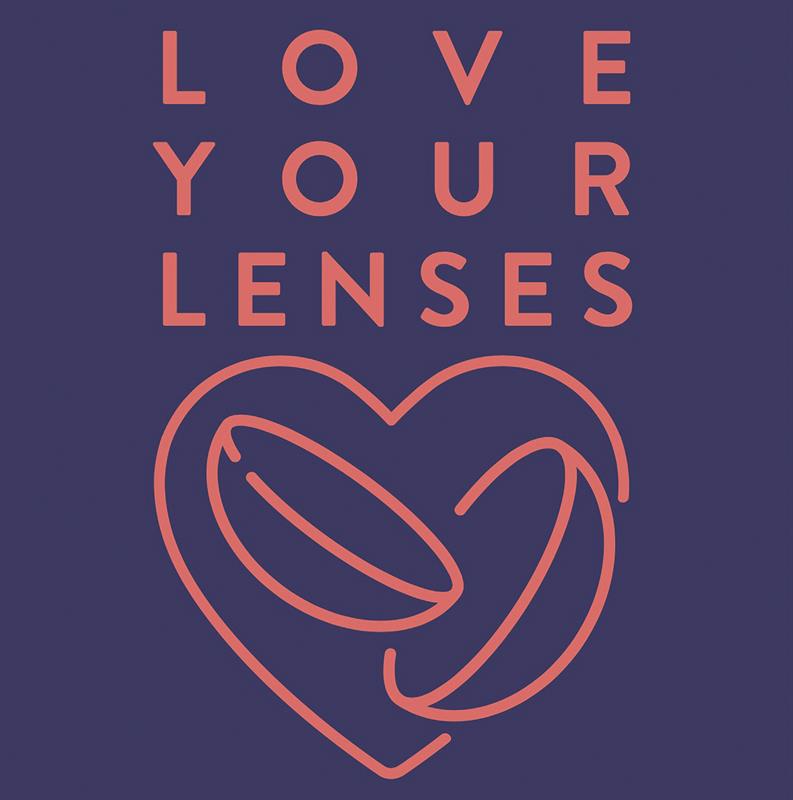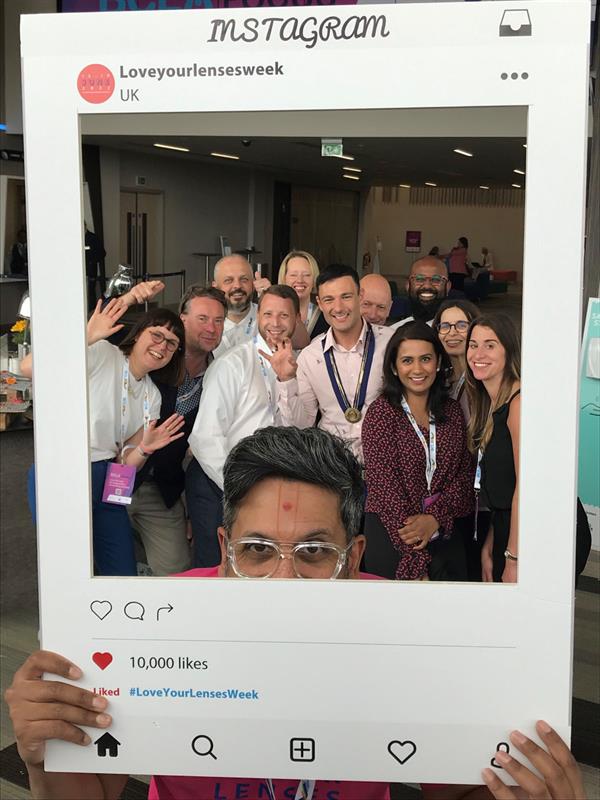
The Love Your Lenses campaign was originally launched last year by the BCLA as a way to support practices in spreading the message about the benefits of contact lens wear. Those registering to take part received both a printed and online resource pack, which included t-shirts, pens, stickers, posters and digital assets - the latter to help you spread the word via websites and social media.
The BCLA relaunched Love Your Lenses in 2021, with more than 220 practices taking part. A key message then, as we moved out of lockdown, was to highlight how mask-wearing offered an opportunity for people to consider the switch from spectacles to contact lenses, and to ‘stop the steam’. This year’s campaign has built on the momentum and has proved a useful way for those involved to promote both contact lens wear and the services offered by those eye care practices taking part.
Time to try
The BCLA Love Your Lenses campaign is designed not just to encourage greater awareness of the advantages of contact lens wear by the public, but to promote safe wear, good compliance with instructions and regular health checks with eye care professionals. The key aims are follows:
- To raise awareness of safe contact lens wear and the benefits of wearing contact lenses
- To promote the importance of hand hygiene when applying and removing contact lenses
- To promote the importance of contact lens check-ups among contact lens wearers
- To increase contact lens wearers’ awareness of and compliance with contact lens aftercare advice
- To promote the BCLA list contact lens ‘do’s and don’ts’ for contact lens wearers
- To highlight the potential dangers of buying lenses online from unregulated suppliers
- To inform the public about how to report illegal suppliers of contact lenses via their eye care practitioners
- To inspire eye care professionals to encourage patients to consider trying contact lenses
- To highlight the dangers of water if it comes into contact with contact lenses and their cases
Top 10 Things for People to Know

The campaign includes a top 10 of useful facts, which are a helpful resource for patients who might be considering contact lenses and might have previously thought themselves unsuitable or who might still entertain inaccurate opinions about them.
- Can anyone wear contact lenses?
- Nowadays, almost everyone can benefit from contact lens wear. Most prescriptions can be corrected with contact lenses and advances in lens materials and solutions mean that wearing contact lenses is simpler, more convenient and more comfortable than ever before.
- Are all contact lenses the same?
- No. There are hundreds of different types of contact lenses and thousands of different fittings. Each lens type needs to be fitted to meet your individual requirements. Contact lenses are not interchangeable and should never be changed without the recommendation of your practitioner. This theme was further explored in a webinar held last week as part of the campaign.
- Are all contact lens solutions the same?
- No. Different solutions contain different ingredients and may require different steps to be effective. Some lens solution combinations may be more compatible with your eyes than others so do not switch the solution you use except on the advice of your practitioner.
- Am I too young for contact lenses?
- Young children, and even babies in some instances, can be fitted with contact lenses. Research has shown that children can be very successful and benefit from contact lens wear. Now that most contact lenses are replaced often, there is no need to wait until your eyes have stopped changing to wear contact lenses.
- Am I too old for contact lenses?
- With modern lenses, there is no reason why age should be a barrier. Bifocal and multifocal contact lenses are available for those who need different lens powers for distance and close work, or you may want to wear contact lenses for some of the time and spectacles for the rest.
- Are contact lenses comfortable to wear?
- Contact lenses provide excellent comfort and vision. Most people find that they are so easy to use that they forget they are wearing them. Your practitioner will help you find the most comfortable lenses for your needs.
- Are contact lenses difficult to put on and take off?
- Applying and removing lenses takes some practice but will soon be as natural as brushing your teeth. Your contact lens practice will help you get used to handling your lenses and will be on hand to give you advice.
- I don’t like the idea of putting something on my eye. Can I still wear contact lenses?
- Many people are concerned about a lens touching their eyes or putting them on, but are still very successful with contact lenses. Try a lens for yourself and see how comfortable it can be. Soft lenses feel much like a drop of water on the eye.
- Can a contact lens go round the back of my eye?
- The outer coating of the eye is continuous with the inner coating of the eyelid. If a lens is dislodged from the front of the eye, it may settle under the upper or lower lid but cannot go behind the eye. Make sure you remove the lens if it becomes dislodged.
- How frequently do I need to have a contact lens check?
- Your contact lens practitioner or optometrist will advise you when you need to return for an assessment, based on your individual needs.
Are all contact lenses the same?
 A key event during Love Your Lenses week was an online webinar where a panel of leading experts, including Professor James Wolffsohn, Neil Retallic, Indie Grewal and Serena Dunwoody, discussed a review article published earlier in the year in Contact Lens and Anterior Eye entitled ‘All soft contact lenses are not created equal.’1
A key event during Love Your Lenses week was an online webinar where a panel of leading experts, including Professor James Wolffsohn, Neil Retallic, Indie Grewal and Serena Dunwoody, discussed a review article published earlier in the year in Contact Lens and Anterior Eye entitled ‘All soft contact lenses are not created equal.’1
A key finding of this paper, focused on by the panel, was that ‘Given the wide range of parameters and properties available, few soft contact lenses are identical in their clinical performance. The consequences of inappropriate substitution of soft contact lenses can vary from physical or visual discomfort to significant physiological complications.’
The review identified 16 properties of soft lenses that, where lenses are substituted, may be associated with between one and six aspects of potential patient dissatisfaction and adverse events. The authors concluded: ‘It is in the best interests of contact lens wearers that the intended contact lenses are prescribed and fitted and that lenses are never substituted for another lens type without prior consultation with an eye care practitioner, for the simple reason that all soft contact lenses are not created equal, and a different lens may have properties unsuited to the patient.’ Substitution should only ever be initiated by the clinician.
Summing up the webinar, BCLA president Neil Retallic said: ‘Our panel, containing a paper author, an industry representative and an eye care practitioner, underline the scientific relevance of this paper and what it means, not just in everyday practice to ECPs, but also how it transfers across industry. As we celebrate Love Your Lenses Week, the webinar has been a chance to consider that, while not all soft contact lenses are created equal, they all can be loved the same.’
